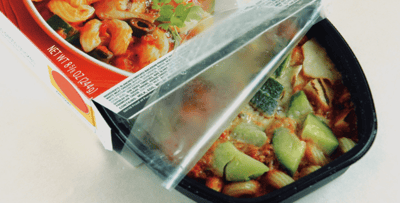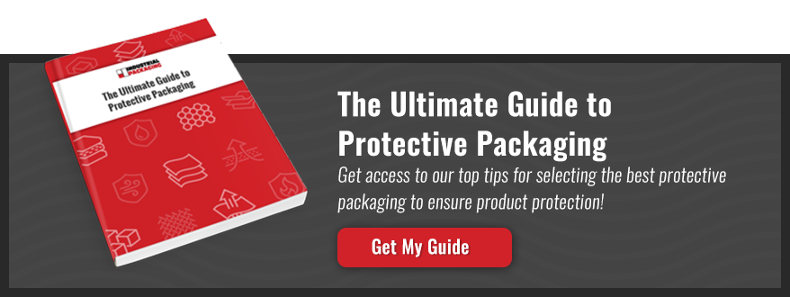What Are Lidding Films? Applications And Uses
You have begun the process of packaging your products in rigid packaging. Perhaps you are using hard plastic, paperboard, or metal containers.
But, to keep your customers safe from contamination, you want to add an additional layer of protective packaging to your products.
Having done some research, you have come to find that the most common way to do this is to add a layer of lidding film to your containers.
However, you are new to lidding films and are looking to learn more about these flexible packaging materials. You want to find out if they are the right solution for your protective packaging needs.
With many years of experience in protective packaging, Industrial Packaging has helped thousands of businesses choose the proper protective packaging for their products. And, we can help you to do the same.
In this article, we will explain what lidding films are. Additionally, we will explore some of the common materials and applications used for this type of protective packaging.
With the information here, you will be able to decide if lidding films are the right protective packaging material for your rigid packaging containers.

What Are Lidding Films?
Lidding films are a type of flexible packaging film. Generally speaking, they are most commonly made from paper, foils, polyethylene, polyester, and other types of flexible packaging materials.
Lidding films are available in both easy-peel and lock-tight versions. With easy-peel, as the name would suggest, the consumer can peel the film from the container with relative ease.
On the other hand, lock-tight films seal so tightly; you need a tool (such as scissors or a knife) to gain access to the product. This type of film features a layer of sealant that is laminated to the lidding film for superior adhesion.
What Are Lidding Films Used For?
Lidding films are most commonly used to seal plastic containers, paperboard pints, or trays for food items such as dairy products like sour cream and cottage cheese. Other products packaged in lidding films may also include canned soups, meats, microwave dinners, and other foods packaged in rigid containers.
Need help finding the right protective packaging supplies?
Who Uses Lidding Films?
Businesses that most commonly employ lidding films include food manufacturers, supermarkets, and other companies working in food production. These businesses use lidding films to increase shelf life and prevent contamination of the products being packaged.

If the lidding film is removed from the container, this will alert the consumer that the product has been tampered with and is not safe to consume.
What Are The Different Types Of Lidding Films?
There are many different types of lidding films that are made for various applications. The different types of lidding films include the following items:
- Anti-Fog Lidding Films - These films are used to prevent the formation of moisture inside of the container.
- Chillable Lidding Films - These types of films are specially designed for lower temperatures and are most commonly used for packaging refrigerated food products.
- High Oxygen Lidding Films - These lidding films are commonly used in modified atmosphere packaging applications in which the product requires higher concentrations of oxygen gas.
- Freezable Lidding Films - Freezeable lidding films are specialty films designed to resist ultra-low temperatures. They are used for packaging frozen foods.
- Ovenable Lidding Films - Ovenable films are designed to resist ultra-high temperatures and can be heated in an oven or microwave.
- Self-Venting Lidding Films - These types of lidding films are designed to allow steam to escape the container for food products heated in an oven or microwave.
- Resealable Lidding Films - Resealable lidding films allow the consumer to re-apply the film after the container has been opened.
Are Lidding Films Right For You?
To figure out if lidding films are suitable for your food packaging requirements, you will have to answer a few simple questions.
- Do you require an additional layer of protective packaging for your product containers? - If you answered yes, lidding films would be a good option for you.
- Is recycle-ability for your packaging important to your consumers? - If you said yes, lidding films are not a good fit for your needs.*
*If you are willing to pay more for sustainable lidding films, some greener options are available. Inquire with one of our packaging experts to learn more.
- Do you need protective packaging that can resist high heat or cold? - If you answered yes, lidding films are a good fit for your products.
- Do you need a flexible film for your modified atmosphere packaging? - If you said yes, lidding films are a good option for you.
Where Can You Learn More About Protective Packaging?
With the information in this article, you should have everything you need to decide if lidding films are the correct type of protective packaging for your products.
If, after reading this article, you feel that lidding films are not the type of protective packaging that is right for you, you will want to consider reading this companion piece, The Ultimate Guide To Protective Packaging.
With the information in this guide, you will be able to find the right protective packaging materials for your products.
On the other hand, if you have concluded that lidding films are the correct packaging solution for you, you may want to speak with one of our packaging experts.
They will be able to help you choose the appropriate lidding film for your food packaging applications and packaging line, even if you do not ultimately buy your films from us.
About Nathan Dube
As the Digital Marketing Specialist at Industrial Packaging, I am honored to create content for such a phenomenal company and work with one of the greatest teams in the Packaging Industry. Whether creating a video, writing blog posts or generating other pieces of content and multimedia, I am always excited to help educate and inspire our prospects and clients to reach their highest potential in regards to their packaging processes and needs.




